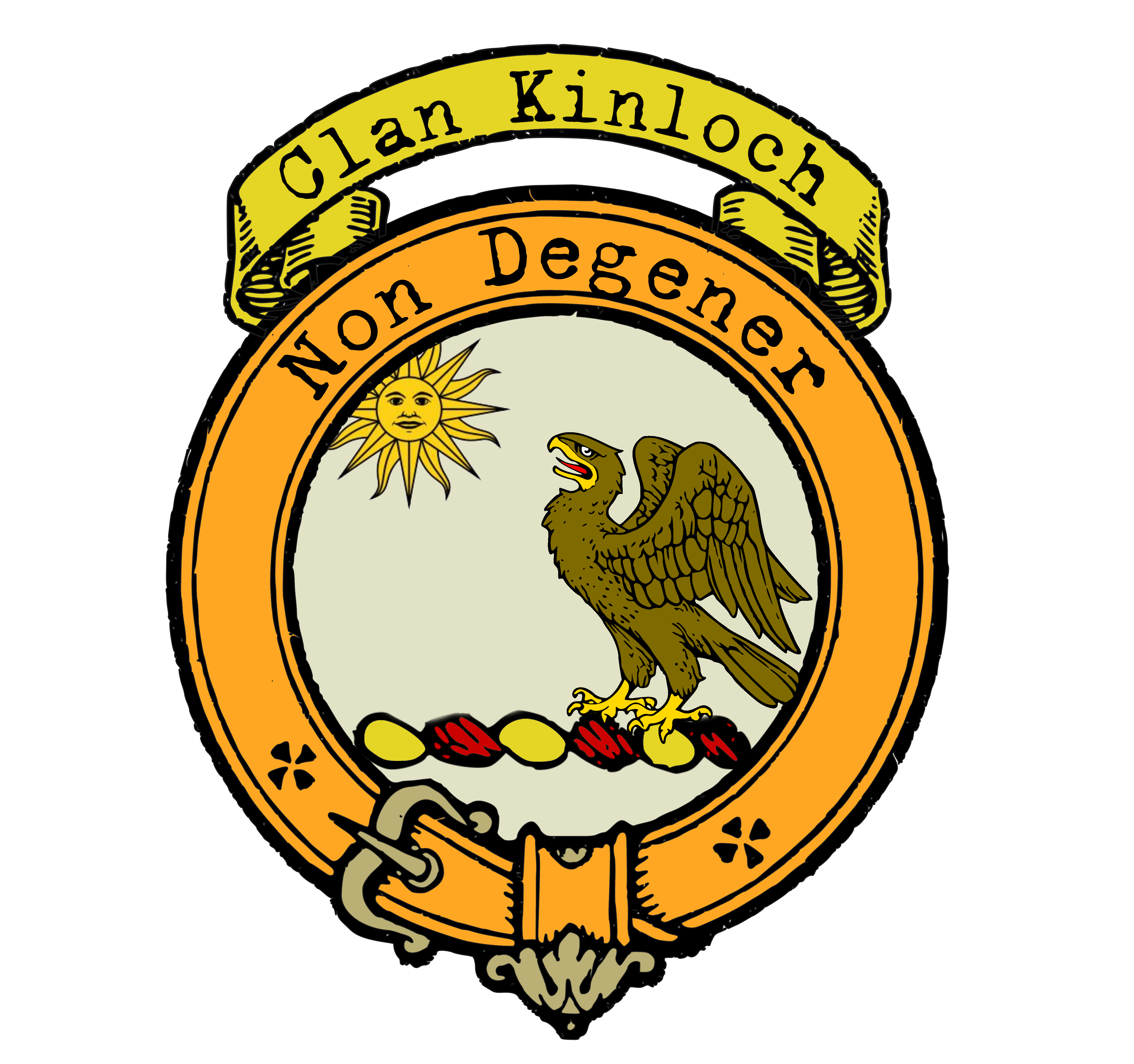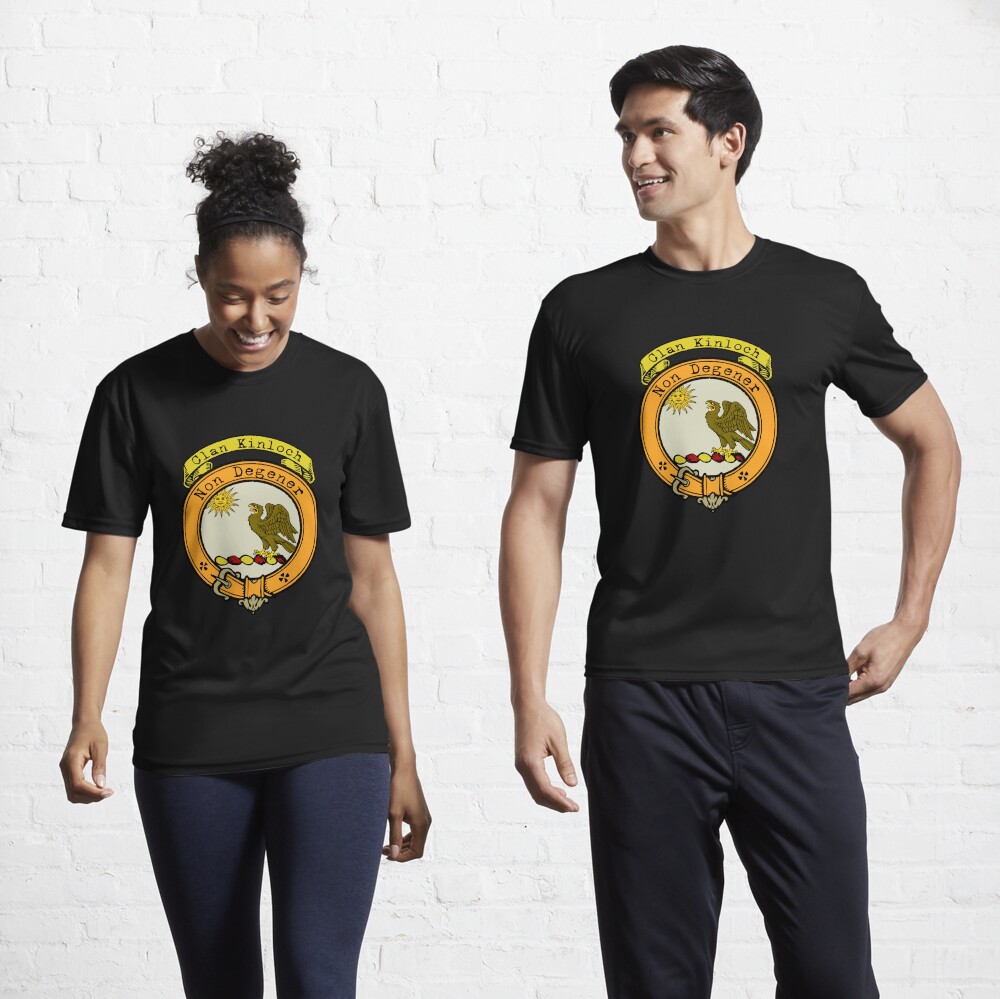Kinloch Clan
|
|
CREST: A young eagle perched and looking up to the sun in splendor all Proper MOTTO: Non degener TRANSLATION: Not degenerate VARIATIONS: N/A |
| In the enchanting tapestry of Scottish history, the Kinloch clan stands as a testament to ancient heritage and resilience. From their ancestral lands at the head of Rossie Lock in Fife, the Kinlochs have witnessed the rise and fall of kings, engaged in battles, and endured trials that have shaped their remarkable story. Let us embark on a journey through time to explore the rich history of the Scottish Clan Kinloch.
The name “Kinloch” derives from the Gaelic term “ceann-loch,” meaning “head of the loch.” The Kinlochs trace their roots back to the reign of Alexander III, a period of great significance in Scottish history. They were among the earliest families to receive charters to their lands, indicating their prominence in the region. In the annals of Scottish history, the Kinloch clan’s presence is undeniable. John de Kyndelouch, a notable figure, obtained confirmation of a millpool privilege in Fife around 1250. Further mentions of William de Kyndelloch of Fifeshire appear in the Ragman Roll of 1296, demonstrating their allegiance during a tumultuous time when Edward I of England sought to assert authority over Scotland. Throughout the reigns of James IV and V, George Kinloch, styled as “of Kinloch and Cruivie,” emerged as a prominent figure within the family lineage. His sons, Alexander and David, became progenitors of the cadet families of Kinloch of Kilrie and Kinloch of Gourdie, respectively. The Kinloch clan produced several individuals of great distinction. David Kinloch, a renowned physician and traveler, brought honor to the family in the late sixteenth century. His acquisition of the lands of Aberothrie from James VI in 1616 further solidified the family’s prominence. In 1685, another remarkable Kinloch, Sir David Kinloch, was created a Baronet of Nova Scotia. His son, Sir James Kinloch, continued the family legacy by marrying the heiress of Nevoy of that Ilk. However, their support for the Jacobite cause during the 1745 uprising led to the forfeiture of titles and estates. Despite the family’s subsequent repurchase of the lands, they eventually settled in England, leaving their Scottish abode in the hands of a cousin, George Oliphant Kinloch. The Kinloch lineage experienced a renaissance through the efforts of Sir George Kinloch, a distinguished member of the Scottish Bar. As proprietor of the barony of Kinloch, he received a baronetcy and restored the family’s fortunes. Meanwhile, the Kinlochs of Gilmerton in East Lothian thrived under the Baronetcy of Sir Francis Kinloch, who married into prominent East Lothian families, including the descendants of the renowned General David Leslie, Lord Newark. The Kinloch name resonates globally through the iconic Highland outfitters, Kinloch Anderson. The brand’s commitment to Scottish tradition and craftsmanship has earned it a prestigious reputation. Furthermore, the clan’s connection with the Grenadier Guards, an esteemed regiment of the British Army, adds to their illustrious history. The tenth Baronet of Kinloch served in the regiment during the Crimean War, and his son’s valiant actions in the First World War led to his rise to the rank of brigadier general in 1917. |
|
Citations:
|
|

Purchase @ Redbubble
Purchase @ Amazon.com
Purchase @ Amazon.co.uk

